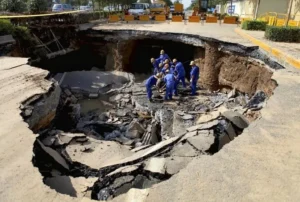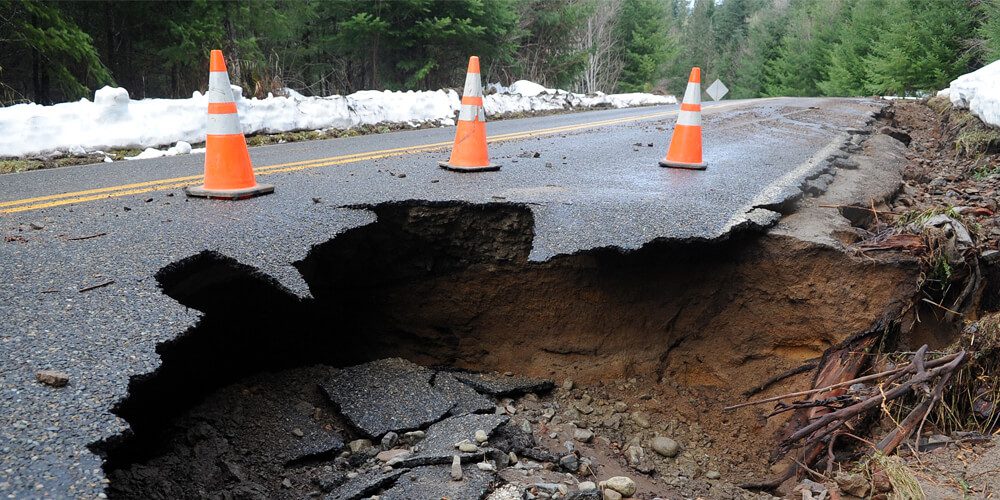Sinkhole repair begins with identifying the type and severity of the void and selecting a remediation method based on site conditions, soil composition, and structural impact. The core solution involves either filling the void with engineered materials or stabilizing surrounding soils to prevent further collapse. Modern repair techniques combine geotechnical investigation, pressure grouting, and structural reinforcement.
Engineers must assess subsurface voids and the overall integrity of adjacent structures before implementing a repair strategy. Advanced imaging, load testing, and soil composition studies provide essential data that shapes the selection of an effective repair technique. Understanding the science behind these methods ensures both safety and long-term stability.
This article explores the science and decision-making behind sinkhole repair methods, offering technical comparisons, material data, and expert-level insights to help readers make informed decisions about these often urgent and complex situations.
Types of Sinkhole Repair Techniques
Compaction Grouting
Compaction grouting involves injecting a viscous, low-mobility cementitious grout into the subsurface under pressure. As the grout enters the void or loose soil, it displaces and densifies surrounding soil, creating a denser, more stable mass. This technique is especially effective in granular soils where other methods may fail to provide adequate compaction.
Bonus Tip: Compaction grouting minimizes lateral soil movement, making it a suitable option near existing building foundations or infrastructure.
Chemical Grouting
Chemical grouting, also known as permeation or pressure grouting, utilizes polyurethane or epoxy resins. These materials expand upon injection and react chemically with soil or water to fill voids and bind soil particles together. This method is ideal for repairs requiring precision or minimal disruption.
Bonus Tip: Chemical grouting is commonly used in urban areas where heavy equipment access is limited.
Concrete Plugging
Concrete plugging is a straightforward and economical option. It involves capping a sinkhole with high-strength concrete to seal the opening and stabilize shallow voids. This method is often used as a preliminary step before implementing deeper remediation.
Underpinning with Piers
This method stabilizes structures by transferring their loads from unstable ground to more secure, load-bearing strata below. Steel piers or helical piles are driven or drilled deep into the earth. Once anchored, they support the structure independently from the compromised soil above.
Bonus Tip: Underpinning is ideal for properties that have experienced significant settlement or where a long-term solution is required.
Excavation and Replacement
Excavation and replacement involve removing the compromised soils and voids, then replacing them with compacted structural fill. This method allows for direct visual confirmation of the extent of the damage but is generally limited to shallow sinkholes.
Geogrid Reinforcement
Geogrids are synthetic materials installed in layers within soil to improve tensile strength and distribute loads over a wider area. When used in sinkhole repairs, geogrids help form a bridging structure above a known or potential void.
Bonus Tip: Geogrids are especially effective when paired with controlled fill to stabilize expansive or weak soils.
Comparison of Sinkhole Repair Techniques
| Technique | Best For | Soil Compatibility | Durability | Cost Range | Disruption Level |
| Compaction Grouting | Moderate to deep voids | Granular and sandy soils | High | $$ | Moderate |
| Chemical Grouting | Tight-access or shallow repairs | Cohesive and porous soils | Moderate | $$ | Low |
| Concrete Plugging | Small, shallow sinkholes | All soil types | High | $ | Low |
| Underpinning with Piers | Structural stabilization | All soil conditions | Very High | $$$$ | High |
| Excavation & Replacement | Accessible shallow voids | Any, with stable margins | Moderate | $$ | High |
| Geogrid Reinforcement | Non-structural applications | Soft, compressible soils | Moderate | $ | Moderate |
Technical Specifications of Common Repair Materials
| Material Type | Properties | Common Uses |
| Cement Grout | High compressive strength, low shrinkage | Compaction grouting, structural voids |
| Polyurethane Foam | Lightweight, rapid expansion, water-resistant | Chemical grouting in tight spaces |
| Steel Piers | High load-bearing capacity, corrosion-resistant | Foundation underpinning |
| Geogrid Fabric | Tensile strength, flexibility, chemical resistance | Soil reinforcement |
| Controlled Fill (Flowable Fill) | Self-compacting, low-permeability | Void backfilling, excavation fills |
Things to Consider Before Making a Decision
- Site Conditions: Evaluate soil classification (clay, sand, silt, etc.), void geometry, and groundwater influence. These factors guide both material and method selection.
- Structural Impact: Determine whether the sinkhole affects load-bearing areas, foundation elements, or utilities. Some techniques are unsuitable near high-risk structures.
- Budget Constraints: Repair costs vary greatly. Chemical grouting offers cost-effective speed, while underpinning delivers high-end durability at a premium.
- Access and Equipment Needs: Urban or tight-access sites may limit large-scale excavation or heavy equipment use, favoring low-disruption methods.
- Long-Term Goals: Decide between temporary remediation (useful for time-sensitive needs) or permanent stabilization designed to prevent future issues.
- Regulatory Compliance: Permits, environmental regulations, and insurance assessments may affect what methods are legally or financially viable.
Bonus Tip: A geotechnical report with core sampling and radar imaging provides the best foundation for a reliable repair plan.
Common Questions About Sinkhole Repairs
What causes sinkholes in developed areas?
Sinkholes often form from natural erosion of subsurface materials like limestone by groundwater. In urban settings, leaking utilities, broken sewer lines, or redirected stormwater exacerbate erosion and trigger collapses.
How long do sinkhole repairs last?
Durability depends on the method. Chemical foam injections may last 5–10 years under moderate loads, while steel pier underpinning can remain effective for 50 years or more.
Is it safe to live above a repaired sinkhole?
When repaired using certified engineering practices and inspected post-repair, living above a sinkhole site is generally safe. Safety improves with the use of structural reinforcement methods.
Can sinkholes reopen in the same spot?
Yes. Without proper ground stabilization, drainage improvements, and long-term monitoring, the same area can experience renewed subsidence.
Sinkhole Repair FAQ
How do professionals locate underground voids?
Engineers use tools like ground-penetrating radar (GPR), electrical resistivity tomography, and exploratory drilling to detect and map voids and determine their size and position.
Which method is the fastest to implement?
Chemical grouting is typically the quickest, taking as little as one day depending on the size of the sinkhole and access conditions. It requires minimal excavation.
Are DIY repairs recommended?
No. Attempting to fix a sinkhole without technical expertise can lead to further collapse, property damage, or safety hazards. Always consult a geotechnical engineer.
What role does water play in sinkhole formation?
Water is the leading factor. It dissolves soluble rock, carries away sediment, and changes subsurface pressure balances, creating conditions for collapse.
Can multiple repair methods be combined?
Yes. For complex cases, engineers often blend techniques—for example, stabilizing with compaction grouting and underpinning critical load points.
Make the Right Decision
Sinkhole repair is not a one-size-fits-all task. It requires thoughtful consideration of geological, structural, and logistical factors. The science behind each technique is essential to match the method to the problem.
Make decisions based on comprehensive data, not assumptions or shortcuts. Engage qualified professionals for assessment, design, and execution. By approaching repairs with knowledge and precision, you protect property, infrastructure, and public safety for the long term.

